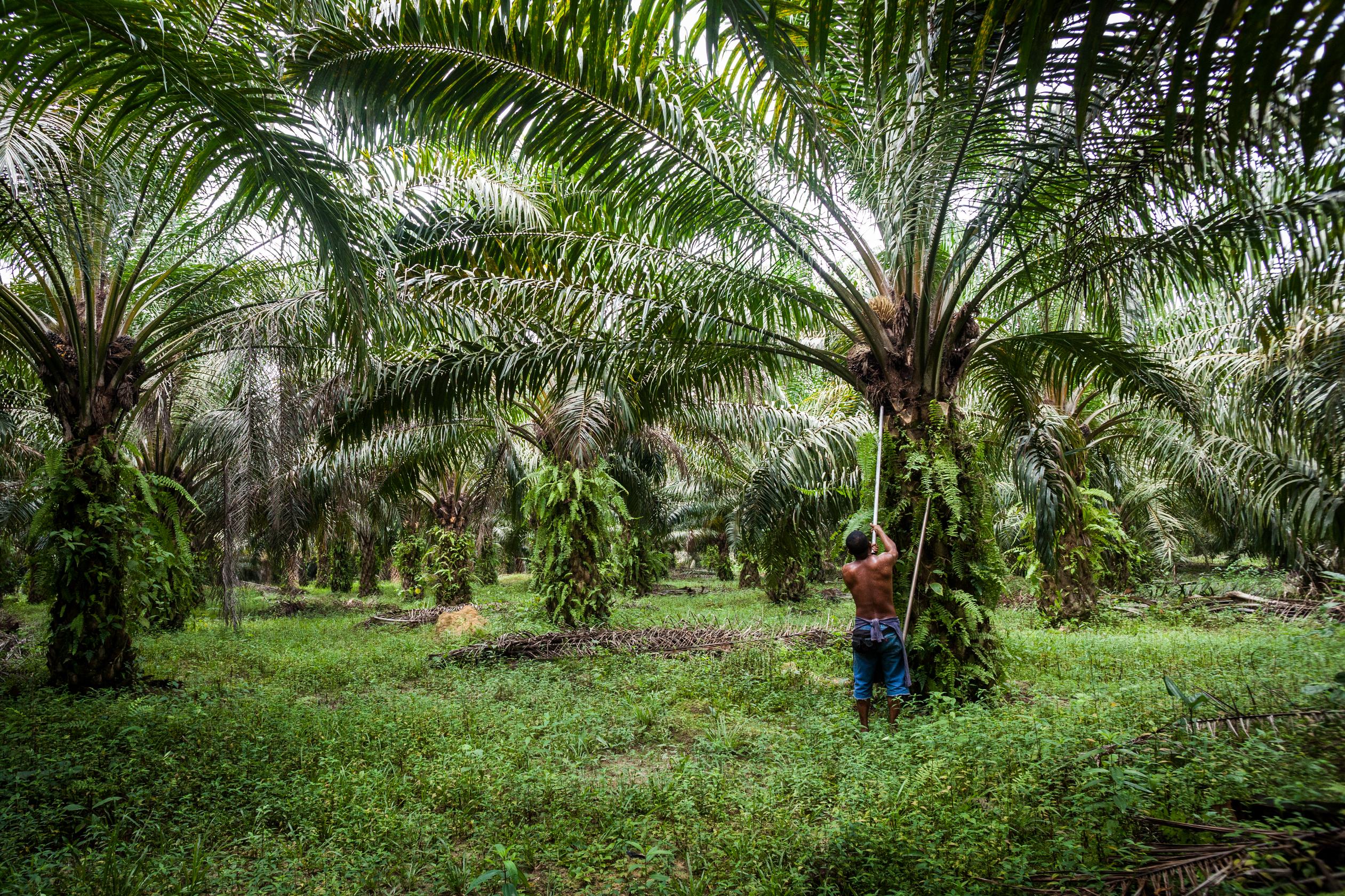10.5M
HECTARES
Since 2000, oil palm expansion has driven deforestation globally, with an estimated 10.5 million ha of forests, including 3.5 million ha of primary forests, replaced by oil palm between 2001 and 2015 (WRI n.d).
Transforming supply chains
Conservation International works with companies across the supply chain to support good practice in palm oil production and sourcing.
We work with producers to support the adoption of sustainable and regenerative practices that increase productivity on existing plantations and reduce impacts on nature. This includes working directly with independent smallholders — providing training and technical assistance to help them meet regulatory and supply chain requirements for sustainable and deforestation-free palm oil. It also includes increasing their income through improved productivity and access to financial incentives for sustainable production through certification or directly negotiated premiums from local mills.
At the same time, we are working with consumer goods and retail companies to:
- Establish sustainable sourcing strategies based on the standards set by the Roundtable on Sustainable Palm Oil (RSPO).
- Build robust traceability systems and use that data to inform sourcing decisions and prioritize suppliers and landscapes for further action and engagement.
- Assess how palm oil supply chains impact and rely on nature, and help companies set science-based targets for nature.
- Invest in sustainable production, conservation and restoration initiatives in key production landscapes and work with local stakeholders to encourage collective action.
